By Justin McKennon
Macro level turmoil over the last several months has wreaked havoc on most major financial sectors, including both stocks and cryptocurrencies. Wars, pandemics and everything in between all exert forces on the markets that are felt in many ways. In any context – buying stocks, cryptocurrencies, or similar – the goal is to acquire things at the lowest price possible. When major market dips happen, the obvious choice is to strategically target projects or companies you like and accumulate. The world of cryptocurrency is considerably more nuanced than traditional finance. There is oftentimes a strong lack of correlation between utility (what a project does) and how much its tokens are valued at. So how do you determine what assets to accrue?
Stalwarts in the cryptocurrency space always seem to be a part of most investment strategies. While larger market cap plays are typically less volatile than smaller market cap plays, there are many well known projects who do not have tokens that provide token owners with upside even if the project is really doing well.
One example of this is Chainlink (LINK). Chainlink is one of the single most important cryptocurrency projects in the entire space.
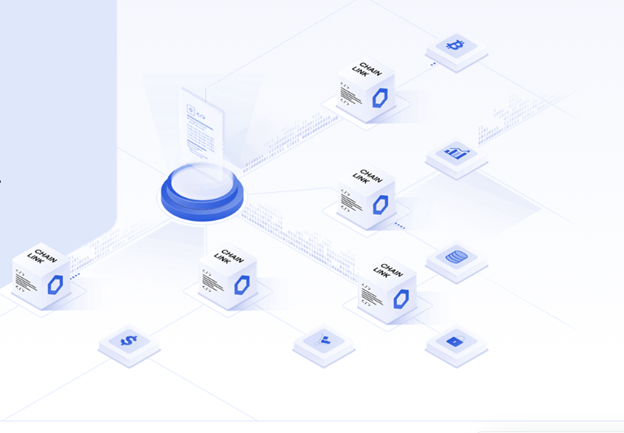
Figure 1 – Chainlink
Chainlink is an oracle. In the crypto space this means that Chainlink can be integrated into other blockchains to provide tamper-proof data streams of off-chain assets. It’s a monumentally important function for major Decentralized finance (DeFi) applications, for example. Chainlink is used on nearly every major blockchain and is continuing to be integrated into more and more projects. However, if you’d invested $10,000 one year ago in LINK, Chainlink’s token, you wouldn’t be so fond of it. One year ago, that $10,000 USD would have netted you about 394 LINK tokens.
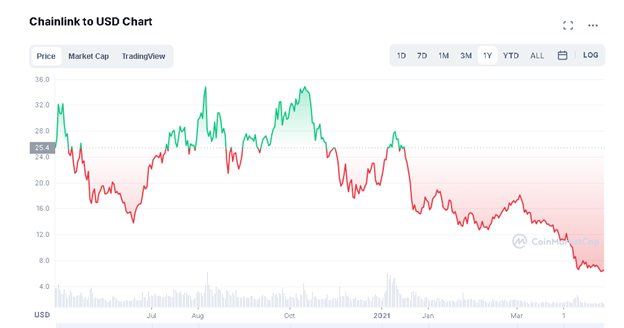
Figure 2 – Chainlink Price
At the time of this article, LINK is trading around $6, meaning you’d have lost about $7600 or so of your initial investment. How can it be that a project such as Chainlink, who is integrating into more and more projects, seeing more and more use and has no major competitors can perform so poorly? It’s easy – LINK’s value is not closely tied to Chainlink’s use.
In traditional finance we buy stock in a company to speculate on future value. If that company does well the stock price tends to reflect this. In cryptocurrency it is not quite so simple. The “company” that develops and builds Chainlink is not what you’re investing in when you purchase the LINK token (in this example).
Cryptocurrency token purchases are markedly different from stock purchases. In all cases, cryptocurrency token value is driven by social perception and the utility of the token. The LINK token has no major use cases, operating solely as a governance token. The economics of supply and demand don’t really drive users to buy and hold LINK, making the utility of the token limited to voting on protocol changes. Token economics (tokenomics) drive most of the long-term token value. Chainlink is an integral and massively important project in the cryptocurrency space. The LINK token is limited to moving with the market.
When developing a portfolio strategy, it is imperative to look closely at the utility of the token rather than the network or application it is affiliated with. Stock values (generally) go up when a product is doing well. Token values are commonly uncorrelated with parent projects. This distinction, particularly when speculating on future value requires different analyses.
Token inflation (minting of more tokens) is a key parameter. Burning or allocations of tokens, liquidity, supply size (and many more) all are important specifics in any project. With social media greatly influencing retail investments it can be challenging to cut through the noise.
One of the best forward-looking metrics for any project is developer activity. Web3 developers are in short supply. Where developers are going money tends to follow.
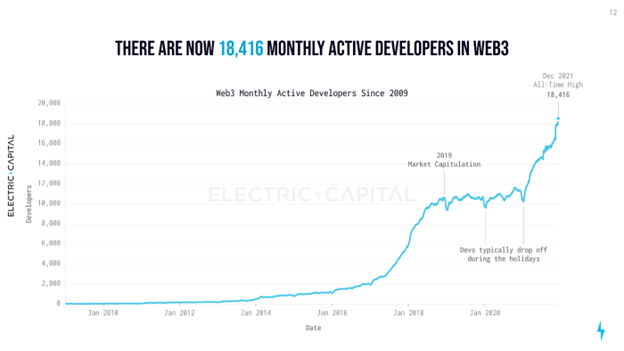
Figure 3 – Jan 2022 Web3 Developers
When considering larger market cap projects (typically Layer 1s), increases in the number of developers and applications on a blockchain is an important signal. This implies increases in network use and demand for the token. For smaller cap projects (which are typically riskier) the network the application resides on must be considered. When a network or ecosystem is booming, applications in the space tend to follow. With uncertainty at the macro level, ecosystems with significant developer growth and activity are important to follow.
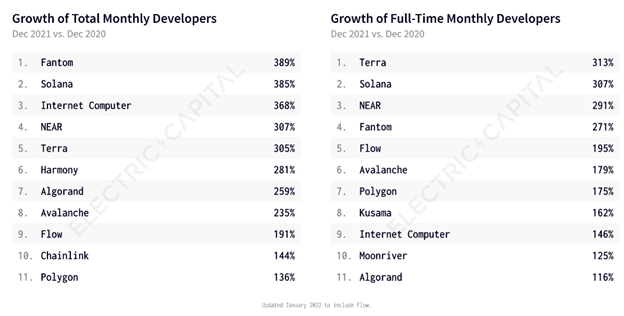
Figure 4 – Developer Growth
Fantom (FTM), Harmony (ONE), Avalanche (AVAX) all appear on these lists (Terra (LUNA) has had well documented challenges in recent times). With key projects in GameFi existing on Harmony, key projects in DeFi existing on Fantom, and AVAX subnets taking off, each has considerable momentum even in this choppy market. Accumulating tokens during bear market cycles or macro level turmoil can yield serious returns. All investments have risk (see: Terra), but data provides a useful tool to aid in decision making.
A final note is that BTC still moves the market. It can be helpful to track “exchange flows” of BTC when speculating on timing for market moves.
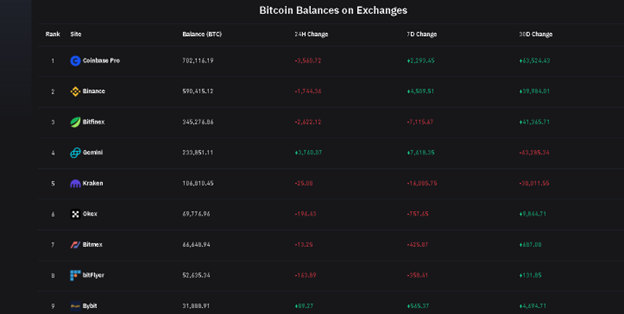
Figure 5 – CoinGlass Exchange Data
Centralized Exchanges (CEX) like CoinBase and Binance serve as gatekeepers for converting to and from local fiat. When exchange balances are increasing it implies more BTC being sold and vice versa. In the last 30 days, much of which is tied to the LUNA debacle, the BTC balances on exchanges have increased significantly. However, as of 5/28/2022, there appears to be BTC purchasing going on causing the CEX BTC balances to decrease.
The beauty of cryptocurrency is the availability of data like this. Blockchain transparency provides a significant benefit compared to traditional finance and stocks where data is obfuscated and scarce.
Justin McKennon is a co-founder of CoinBusters. https://CoinBusters.io serves as a hub for research, analysis and education across the cryptocurrency space.
For more news, information, and strategy, visit the Crypto Channel.

